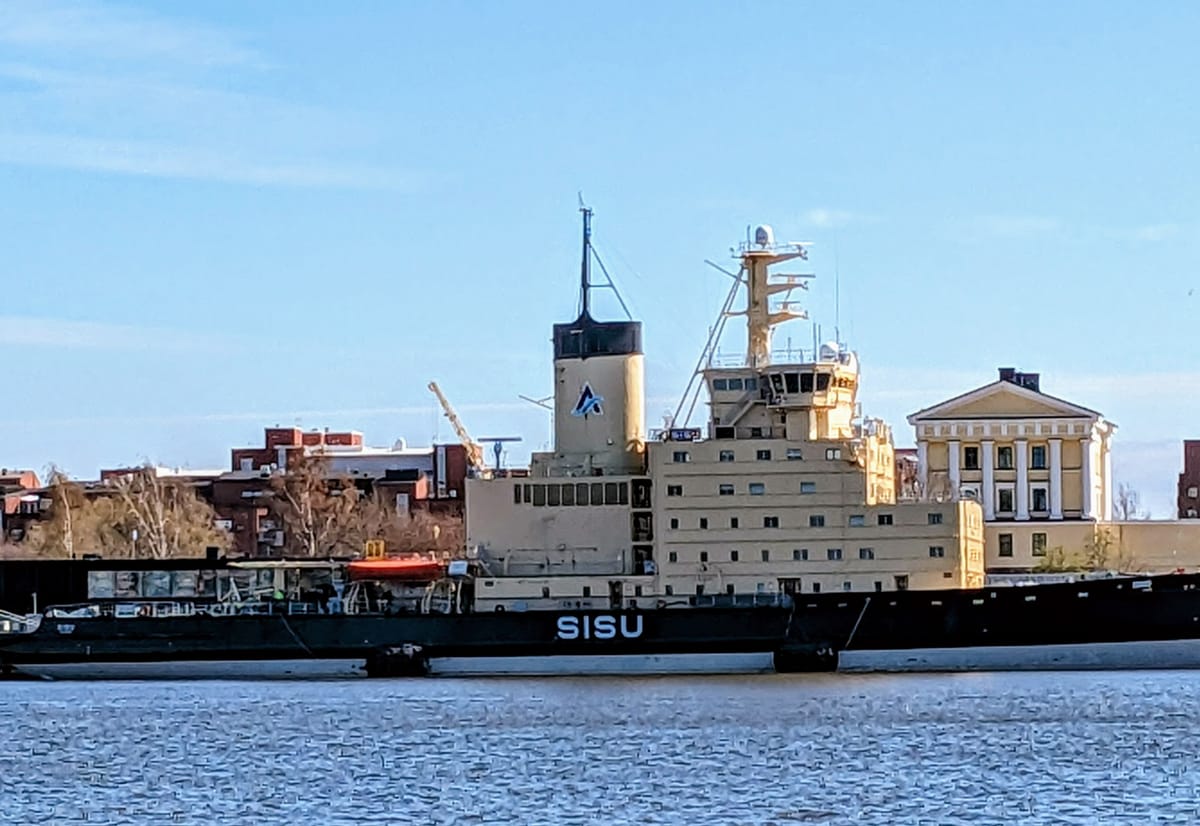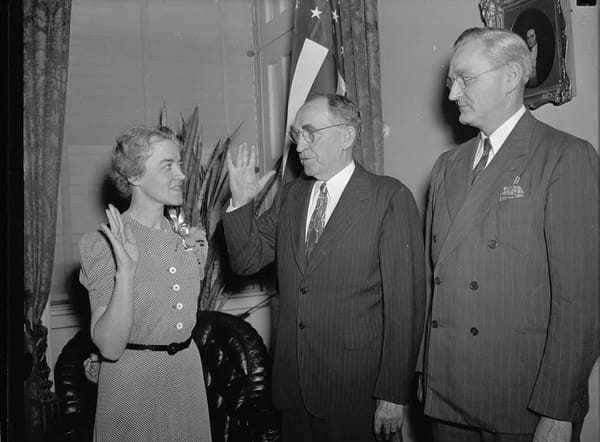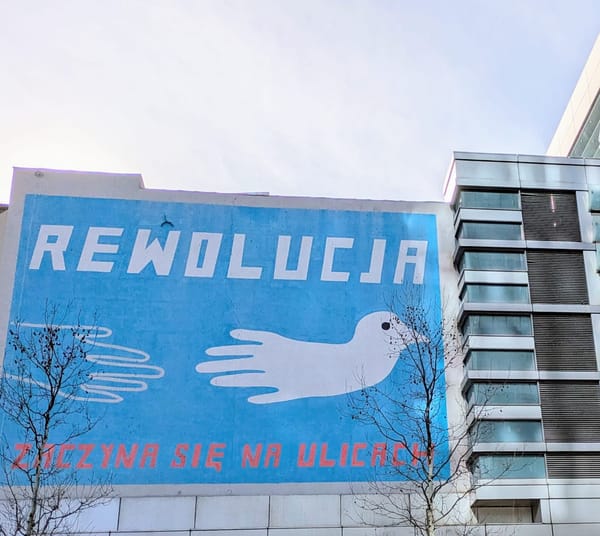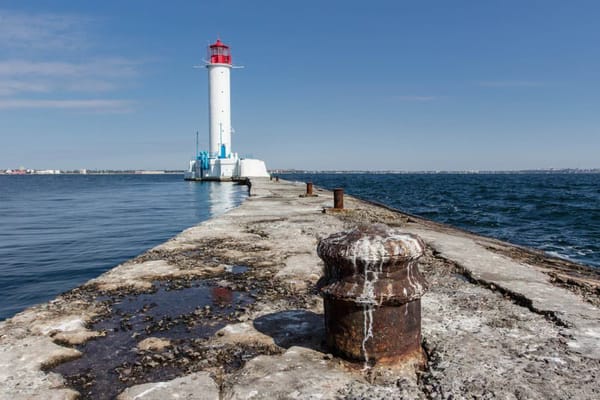The Power of Sisu
Lessons from Finland in periods of rapid change

I spent last week in Finland, where I met with scholars and journalists to discuss disinformation effects, NATO, Russia’s war on Ukraine, the EU election. . .and collective/national mindset shifts.
Side note: In what is a strong model of Finnish and Bulgarian experts joining up to provide critical analysis, The Center for the Study of Democracy (CSD) and the Centre for Research on Energy and Clean Air (CREA) have just released a powerful report on how Turkey serves as a “pit stop” for Russian fuel—thus undermining efforts to sanction Russia. I will share an interview on the report next week.
Three of my favorite words are Finnish. As much as the Germans deserve credit for language that reflects complicated feelings in single words like zweisamkeit fremdscham, and the classic fingerspitzengefühl (h/t Susie Dent)–the Finns have some gems of their own. There is sauna of course, which has a much broader significance than non-Finns realize. There is the wonderful sielunmaisema, or “soul landscape.” And then there is sisu.

If you want to understand the Finnish mentality, you need to try to understand sisu. It isn’t directly translatable. Grit, stoic courage, tenacity, and resilience are all in the mosaic of meaning for this word. Yet none of these words is quite right.
As Hudson Strode, a University of Alabama English professor, wrote in the New York Times (in 1940):
“Even the Finns have difficulty in defining it…To understand sisu is to understand how a little country not much bigger than California, with no more than half the population of New York City, has so gallantly withstood the onslaught of a nation that covers one seventh of the world’s land-area and outnumbers them in man power almost 50 to 1.”
A lot has changed for Finland since 1940. At the time, the survival of an independent Finland was anything but assured. While Finnish sisu had been around for half a millenium, the Finnish nation was barely two decades old. And now the nation is at a new inflection point.
Let’s talk about another four letter word (or acronym): NATO. When I lived briefly in Helsinki as a trailing spouse in 2010, I came to understand how important neutrality was for Finns. While being a part of the European Union was highly valued, the idea of joining NATO just didn’t hold any appeal. It had been important even during the Cold War to maintain some sort of relationship with the “bear to the east,” Russia. Helsinki was an important meeting point for diplomats, and while pride is not something the Finns I know ever express, it was a point of pride to have earned the respect to be such a space.
You’ll remember that after Russia’s full scale invasion of Ukraine in 2022, Finland (and Sweden) quickly worked to join NATO. From a distance, this seemed perfectly logical to many globally minded people west of the region. Yet for me it was still a surprise–not so much the decision, rather how quickly it was made. In Turku last week I asked Finnish scholars what it felt like to them.
The general consensus was that the suddenness was striking, even though it felt like something that had to happen. Oscar Winberg is a fellow at the Turku Institute for Advanced Studies. His work is centered around media and politics–television and US politics in particular. With his deep knowledge of US media culture (and All in the Family in particular–though that’s another post), he has been a helpful interpreter for me. Winberg told me that “it was almost like an overnight shift in public opinion and the political conversation,” when Finland began the process of joining NATO. “I don’t think there was a proper debate, which is troubling in a way. A strong consensus formed, and yet, thinking about it in the context of our dedication to not joining for so long, the change was remarkable.”
Oscar points us to this article from Finland’s public broadcast YLE (in Finnish, so use your favorite translation tool), which provides a helpful timeline of Finnish attitudes—from the public and elected officials. One great line comes from the journalist Unto Hämäläinen, who called the decision to join NATO “revolutionary,” and succinctly summed up its significance saying,“verything that has been said before has lost its meaning.”
Thank you for reading Notes from New Europe. This post is public so feel free to share it.
I was also able to discuss the Finnish lens on Europe and geopolitical issues today with a multi-national group of faculty and scholars at the Aleksanteri Institute—a center for Russian, Eurasian, and Eastern European Studies at the University of Helsinki. In general, these scholars pointed to similar shifts as those we discussed in Turku. In short, they spoke of the anxiety felt after the start of the war in Ukraine, and how quickly discussions of border security and potential threats from Russia moved from academic or theoretical conversations to something more urgent and strategic in tone.
Markku Kangaspuro, the director of the institute and a leading expert on Russian history, politics, and identity, noted how, while the Russian threat to Ukraine, and the potential for Russian aggression in Europe, began even before the 2014 annexation of Crimea, the response before 2022 was very different from neighbors across the Baltic sea. While leaders in Estonia, Latvia, and Lithuania were sounding the alarm, the Finnish was more subdued, and while the the percentage of Finns who approved of joining NATO rose from 17% in 2013 to 26% in 2014, it dropped to 22% a year later. (After the full-scale Russian invasion of Ukraine in 2022, the percentage jumped to 76%)
All of this has me pondering the idea of shifts in mindset. On a national level. It may be that their sisu has enabled people in Finland to change their approach as a country and change in ways others can’t. It would be tempting to talk only about effective policy and economic resilience, and those are factors that should not be undervalued. AND I think there is a lesson in enabling mindset shifts within and across communities.
As I know from colleagues at CSD, and was able to confirm in conversations with Finnish scholars, people in Finland are much less susceptible to disinformation and malinformation. While not immune completely (some worrying attitudes toward asylum seekers and false narratives about immigration are similar to what we see almost everywhere), there are few signs that Russian hybrid warfare has been very effective there. This is, at least in part, a result of national investment in media literacy. (While I won’t call anyone out, I will say that what I see from efforts from American organizations to come to the Balkans and develop media literacy curriculums do not pass the sniff test for effectiveness.)
It is easy to dismiss a country like Finland as exceptional and not holding applicable examples because the conditions elsewhere (economic, demographic, historical) are so different. That is a mistake. Finland has changed significantly in important ways since I was last there, and yet its core strengths remain evident. And unlike my conversations with people from other nations, the people I met there exhibited a recognition that they have more to share–to learn with and from–with people in places like Bulgaria.

Special thanks to Fulbright Finland for supporting this cross-border work.



